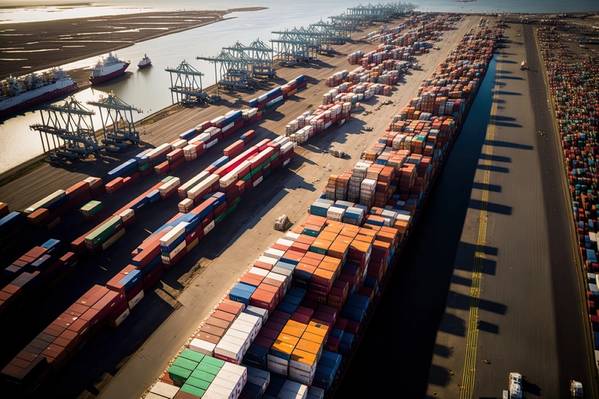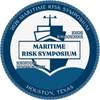
Unions hope a $30 million grant to electrify tractors in a Long Beach, California, port terminal's final push to become the world's first zero-emissions facility will serve as a bulwark against lost jobs in an era of energy transition and increasing automation.
The money from U.S. President Joe Biden's administration for Long Beach Container Terminal's purchase of 60 electric yard tractors that haul shipping containers from stacks to waiting trains comes with strings attached: the new equipment must be operated by humans.
The drivers of those new tractors will labor alongside more than 100 automated vehicles and 70 driverless container-stacking cranes at America's most automated port terminal, which aims to be emissions free by 2030.
The U.S. transportation sector is the nation's largest contributor of climate changing greenhouse gas emissions, according to the U.S. Environmental Protection Agency (EPA). As seaports race to swap out diesel equipment like tractors, trucks and cranes for cleaner electric models, they're also eyeing new automation technology to help process more cargo.
More automation means fewer jobs, in the minds of union leaders, and they have found an ally in the White House.
While the $30 million grant is a fraction of the total cost of the terminal's $2.5 billion modernization program, unions and their allies hope that it and others like it will show the value of prioritizing jobs as U.S. employers adopt green technology.
While the unions that represent U.S. seaport workers declined comment during West Coast port labor talks, the AFL-CIO's Transportation Trades Department, whose members include railroad and airline workers, made clear where the unions are focused.
"We've been dealing with technological change for 100 years in terms of transportation labor," department President Greg Regan said. "Over the last few years, we've seen a lot more of a recognition that you have to think about the workforce aspects of it."
Biden's administration, seen as the most worker-friendly in recent memory, is also pushing for union representation at the plants that will assemble batteries for electric vehicles. Unions are worried the next U.S. presidential election could put a less sympathetic leader in the White House, Regan said.
The Long Beach terminal's electric tractor money comes from the $684 million 2022 Port Infrastructure Development Program that funds projects such as improving cargo efficiency and reducing emissions. The catch is those efforts must not include installation of equipment or infrastructure that would result in a net job loss or a reduction of job quality.
Bet on electric, automation
The potential to increase automation in the port sector is huge, with just 4% of global container terminal capacity coming from partially automated facilities, according to a 2021 report from the Organization for Economic Co-operation and Development's International Transport Forum (ITF), an intergovernmental policy think tank.
The Long Beach terminal, purchased from Hong Kong-based owners in 2019 by the asset management unit of Australia's Macquarie Group Ltd, bet on both electric power and automated equipment for its decade-long redevelopment that combined two aged terminals into one.
The new facility now handles three times more volume and has reduced emissions by 90%, CEO Anthony Otto told Reuters.
It was among the top Southern California port terminals in terms of volume in 2022 and truckers spent less time collecting cargo or dropping empties - improving efficiency and reducing diesel vehicle idle time, Otto said.
Citing ongoing West Coast port labor contract talks, Otto declined to say how many workers have lost jobs in the terminal yard. With the new technology, chapstick-sized sensors embedded in pavement dictate movement of flat-topped vehicles that collect containers from ships and software guides cranes that stack containers.
Union members still secure containers on vessels, operate the massive ship and rail cranes, set containers on the trailers of waiting semi-trucks via joystick, and ferry containers to and from waiting trains.
The terminal's commitment to the union was that "while there was some erosion of some typical longshore jobs, there would be creation of new jobs," Otto said.
The terminal's payroll is larger now than before the redevelopment began about a decade ago, Otto added, without addressing whether that lift came from additional jobs or inflation.
Data shows electrification cuts emissions, and automation reduces labor costs. But a 2021 report from ITF, which describes itself as politically autonomous, and 2018 research from consultancy McKinsey & Co found that automated ports are generally not more productive than their labor-based counterparts. This was because fixed automated systems cannot expand and contract with cargo fluctuations like human crews, and because automated operations may not boost performance enough to justify the heftier equipment costs.
A report underwritten by the International Longshore and Warehouse Union (ILWU) representing West Coast dock workers found that in 2020 and 2021, the Long Beach terminal had 392 fewer jobs than it would have had if it were not automated.
A competing report commissioned by the Pacific Maritime Association employer group found that from 2015, the last year before automated operations, through 2021 paid hours at the automated Long Beach terminal and another in Los Angeles grew 31.5%. The authors, who said that gain was twice that of unautomated terminals, declined to provide figures for Long Beach alone.
Jaime Hipsher, an ILWU tractor driver at the twin Long Beach and Los Angeles ports, said in an interview last summer she had seen the employment impacts from energy use changes and the embrace of automation.
Her father was an ILWU worker at a coal processing facility serving the ports - a job that was eliminated.
"Oftentimes, electrification is connected with automation," Hipsher said. "That isn't necessarily the way electrification needs to go."
(Reuters - Reporting by Lisa Baertlein, editing by Ben Klayman and Claudia Parsons)



